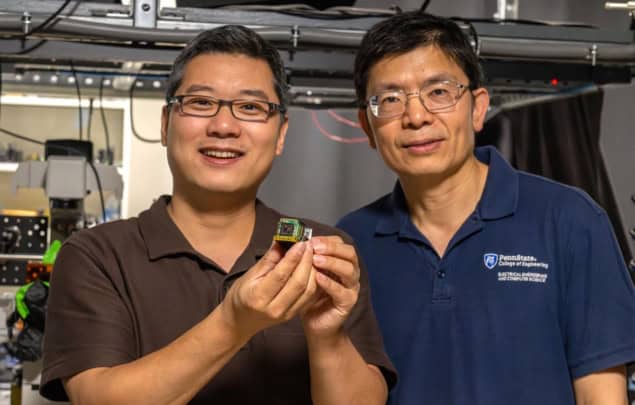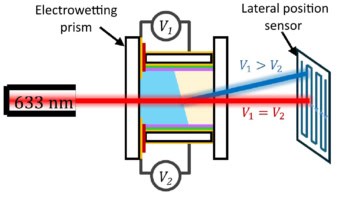
A team of US-based researchers has developed an inexpensive and ultrathin metasurface that, when paired with a neural network, enables a conventional camera to capture detailed hyperspectral and polarization data from a single snapshot. The innovation could pave the way for significant advances in medical diagnostics, environmental monitoring, remote sensing and even consumer electronics.
The research team, based at Pennsylvania State University, designed a large set of silicon-based meta-atoms with unique spectral and polarization responses. When spatially arranged within small “superpixels” these meta-atoms are capable of encoding both spectral and polarization information into distinct patterns that traditional cameras cannot detect. To recover this information into a format understandable by humans, the team uses machine learning algorithms to recognize these patterns and map them back to their corresponding encoded information.
“A normal camera typically captures only the intensity distribution of light and is insensitive to its spectral and polarization properties. Our metasurface consists of numerous distinct meta-atoms, each designed to exhibit different transmission characteristics for various incoming spectra and polarization states,” explains lead corresponding author Xingjie Ni.
“The metasurface consists of many such superpixels; the patterns generated by these superpixels are then captured by a conventional camera sensor,” he adds. “Essentially, the metasurface translates information that is normally invisible to the camera into a format it can detect. Each superpixel corresponds to one pixel in the final image, allowing us to obtain not only intensity information but also the spectrum and polarization data for each pixel.”
Widespread applications
In terms of potential applications, Ni pictures the technology enabling the development of miniaturized and portable hyperspectro-polarimetry imaging systems, which he believes could revolutionize the abilities of existing imaging systems. “For instance, we might develop a small add-on for smartphone cameras to enhance their capabilities, allowing users to capture rich spectral and polarization information that was previously inaccessible in such a compact form,” he says.
According to Ni, traditional hyperspectral and polarimetric cameras, which often are bulky and expensive to produce, capture either spectral or polarization data, but not both simultaneously. Such systems are also limited in resolution, not easily integrated into compact devices, and typically require complex alignment and calibration.
In contrast, the team’s metasurface encoder is ultracompact, lightweight and cost-effective. “By integrating it directly onto a conventional camera sensor, we eliminate the need for additional bulky components, reducing the overall size and complexity of the system,” says Ni.
Ni also observes that the metasurface’s ability to encode spectral and polarization information into intensity patterns enables simultaneous hyperspectral and polarization imaging without significant modifications to existing imaging systems. Moreover, the flexibility in designing the meta-atoms enables the team to achieve high-resolution and high-sensitivity detection of spectral and polarization variations.
“This level of customization and integration is difficult to attain with traditional optical systems. Our approach also reduces data redundancy and improves imaging speed, which is crucial for applications in dynamic, high-speed environments,” he says.
Moving forward, Ni confirms that he and his team have applied for a patent to protect the technology and facilitate its commercialization. They are now working on robust integration techniques and exploring ways to further reduce manufacturing costs by utilizing photolithography for large-scale production of the metasurfaces, which should make the technology more accessible for widespread applications.

Metasurfaces make a single-shot polarization imaging system
“In addition, the concept of a light ‘encoder’ is versatile and can be extended to other aspects of light beyond spectral and polarization information,” says Ni.
“Our group is actively developing different metasurface encoders designed to capture the phase and temporal information of the light field,” he tells Physics World. “This could open up new possibilities in fields like optical computing, telecommunications and advanced imaging systems. We are excited about the potential impact of this technology and are committed to advancing it further.”
The results of the research are presented in Science Advances.



